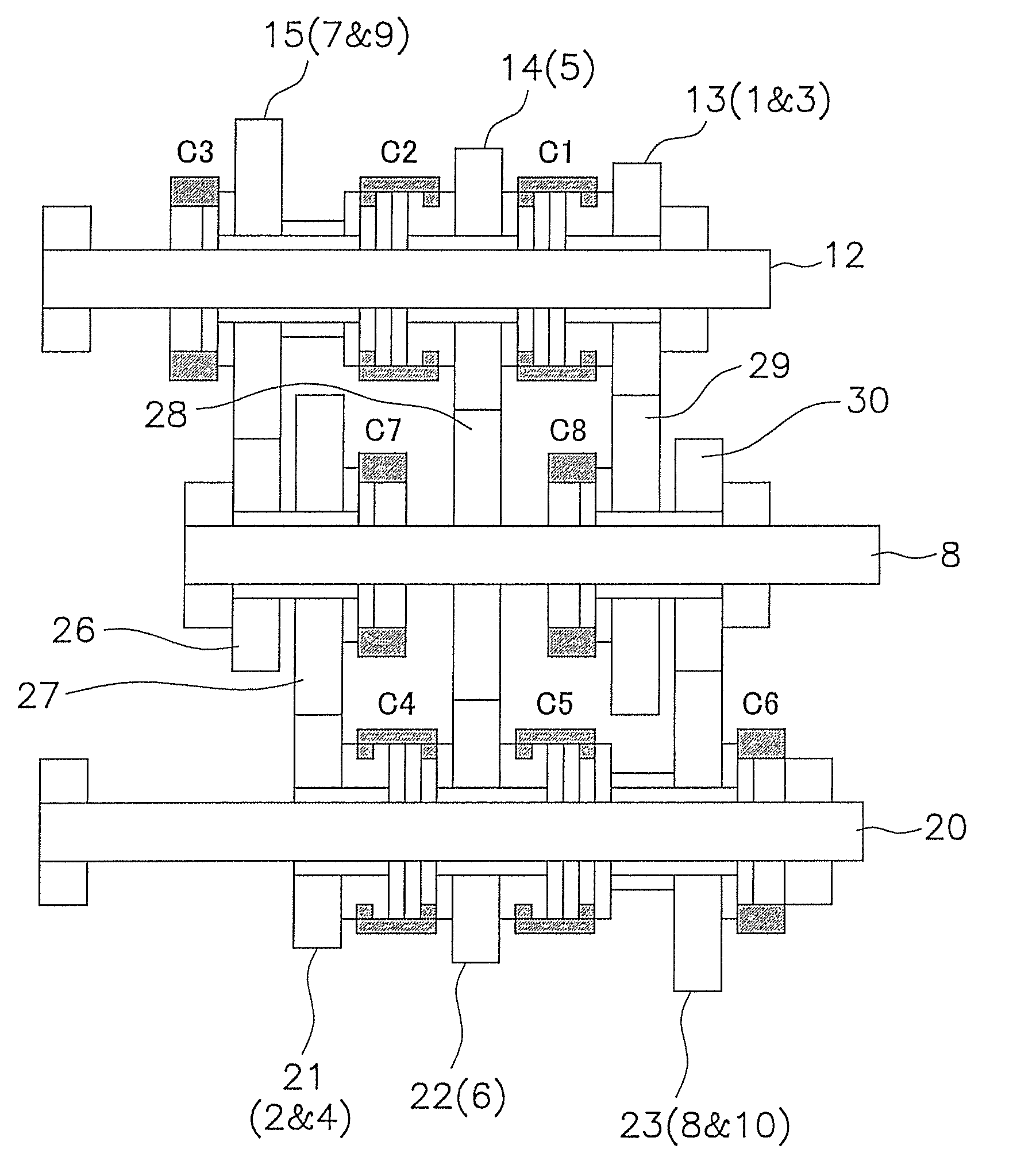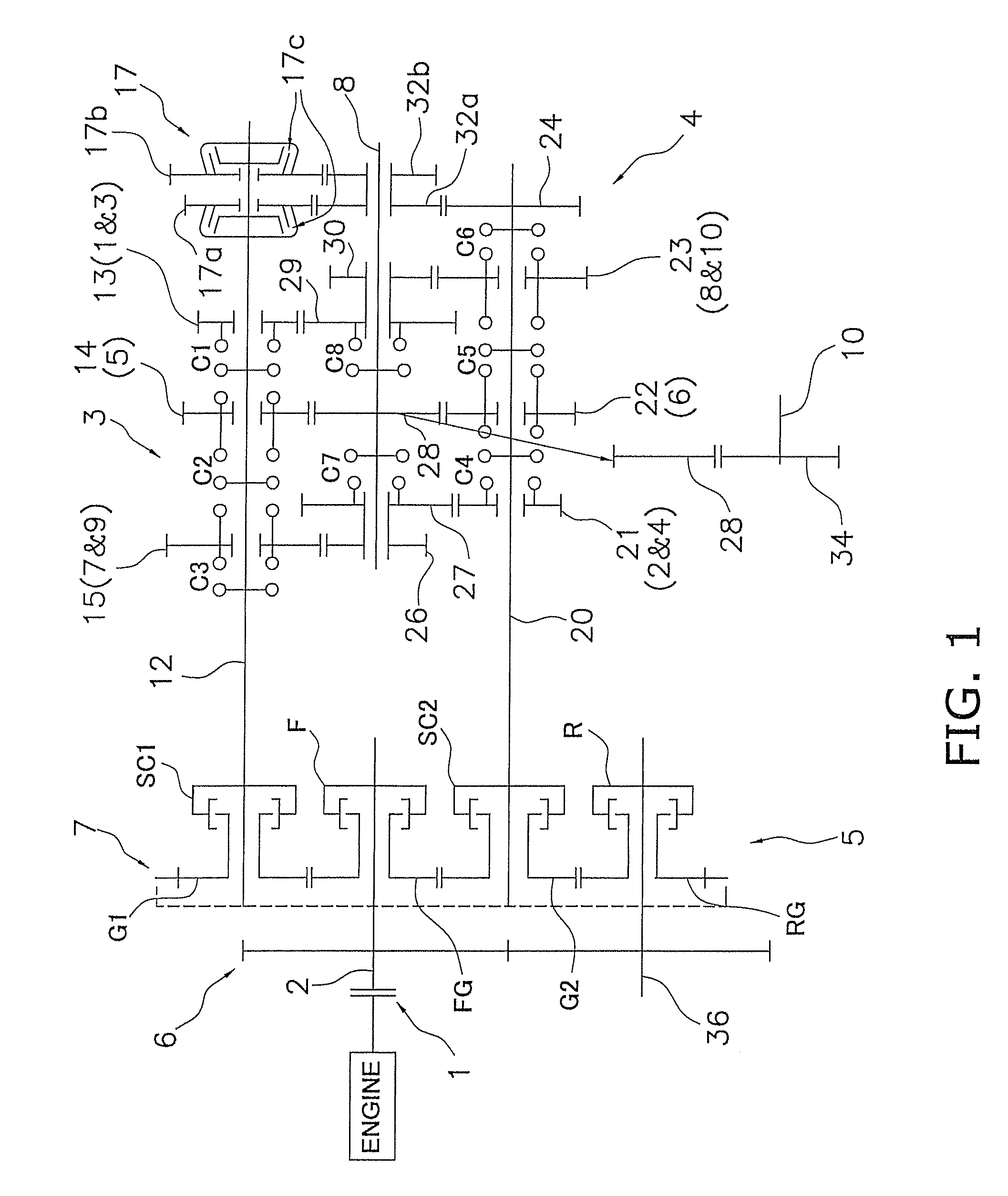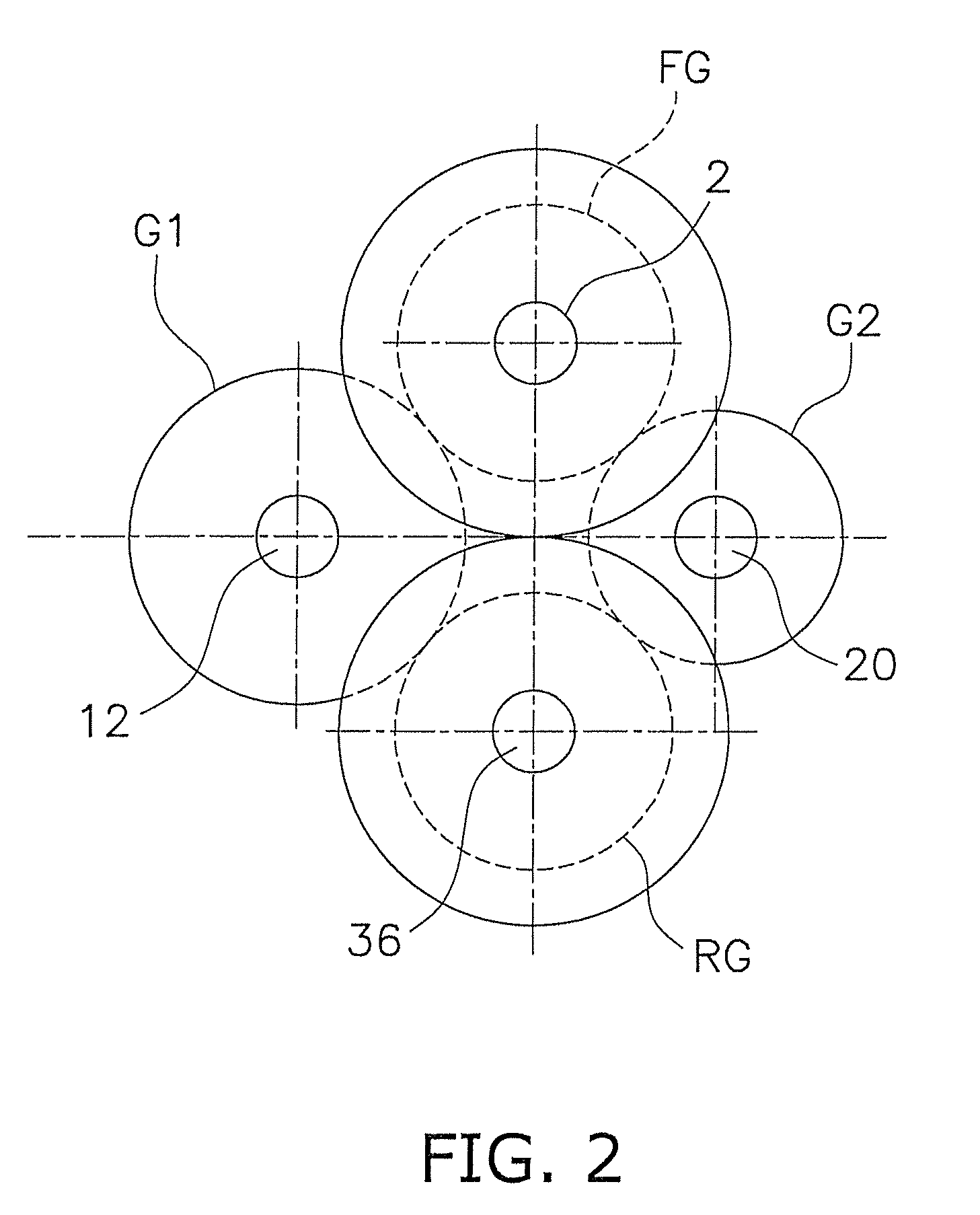Transmission for industrial vehicle
a technology for industrial vehicles and transmission lines, applied in mechanical equipment, transportation and packaging, gearboxes, etc., can solve the problems of complex configuration of oil lines for providing hydraulic pressure to hydraulic clutches, poor power transmission of torque converters, and inability to meet the needs of industrial vehicles, etc., to achieve rapid increase in load or at other times, avoid engine stoppage, and improve efficiency
- Summary
- Abstract
- Description
- Claims
- Application Information
AI Technical Summary
Benefits of technology
Problems solved by technology
Method used
Image
Examples
Embodiment Construction
Overall Structure
[0038]FIG. 1 is a skeleton view of the transmission according to an embodiment of the present invention. FIG. 2 is a general schematic view of the shafts and the like as seen from the engine side of the transmission. FIG. 3 is a schematic partial view of the transmission mechanism. In FIG. 2, only the arrangement of some of the shafts and the like is shown, and the configuration of the output shaft and the like has been omitted.
[0039]The transmission shown in FIG. 1 is installed, e.g., in a wheel loader, and is provided with ten speed-change steps for both forward and reverse travel. The transmission has a main clutch 1 to which rotation from the engine is inputted, an input shaft 2 to which the engine rotation is inputted via the main clutch 1, a first transmission mechanism 3, a second transmission mechanism 4, a clutch mechanism 5, a rotation direction switching gear train 6, a speed change gear train 7, and an output shaft 10. A speed-changing idle shaft 8 is di...
PUM
 Login to View More
Login to View More Abstract
Description
Claims
Application Information
 Login to View More
Login to View More - R&D
- Intellectual Property
- Life Sciences
- Materials
- Tech Scout
- Unparalleled Data Quality
- Higher Quality Content
- 60% Fewer Hallucinations
Browse by: Latest US Patents, China's latest patents, Technical Efficacy Thesaurus, Application Domain, Technology Topic, Popular Technical Reports.
© 2025 PatSnap. All rights reserved.Legal|Privacy policy|Modern Slavery Act Transparency Statement|Sitemap|About US| Contact US: help@patsnap.com



